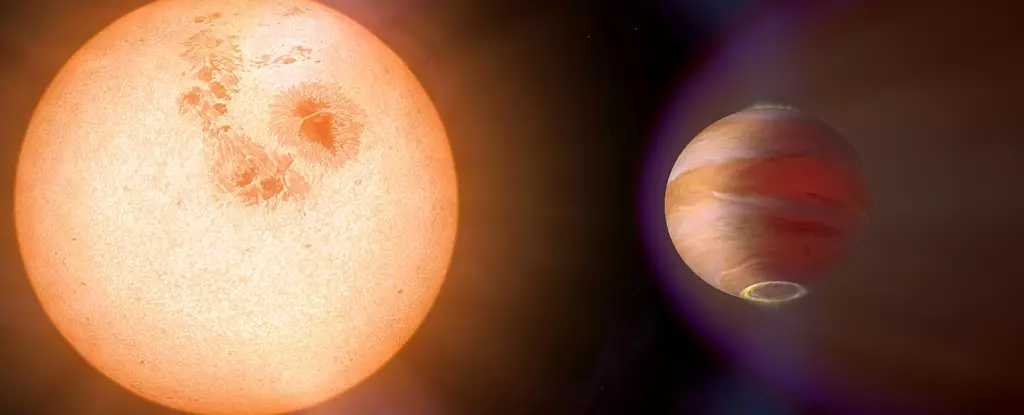The study of stars and their chemical compositions is a key part of understanding the universe and its origins. Recent advancements in astronomical techniques have enabled scientists to measure the metallic content of stars with remarkable precision. This precision allows astronomers to explore intriguing phenomena associated with co-natal stars—those born from the same giant molecular cloud (GMC)—to investigate the variations in metallicity that can exist between them. Surprisingly, recent research suggests that rocky planets could be the culprits behind these differing abundances.
Co-natal stars are expected to exhibit similar metallicities owing to their shared birth environment. In practice, however, differences in metallicity among these stellar siblings have emerged as enigmatic anomalies deserving closer examination. The metallicity of a star, fundamentally determined by the abundance of elements heavier than helium, can offer insights into its origin, evolution, and the presence of surrounding planetary systems. Typically, astronomers would anticipate only slight variations in metal content due to the inherent non-uniformity of GMCs. Yet, pronounced discrepancies indicate an external factor at play.
In a groundbreaking study titled “Metal pollution in Sun-like stars from destruction of ultra-short-period planets,” researchers Christopher E. O’Connor and Dong Lai put forth a compelling hypothesis. Their findings, currently available on the pre-print server arxiv.org, dissect the notion of stellar pollution with rocks—specifically large rocky planets—as the source. This metallic pollution could explain why certain co-natal stars significantly differ in metallic content.
At the heart of the researchers’ argument are ultra-short-period (USP) exoplanets—rocky worlds that orbit their stars at dizzying speed, completing a revolution in mere hours. These bodies, generally similar in composition to Earth but rarely exceeding two Earth radii, have posed questions about their formation. Did they form further out and migrate inward, or are they the remnants of larger planets that succumbed to atmospheric loss due to intensive stellar radiation?
Only about 0.5 percent of Sun-like stars host such planets, making them rare yet particularly fascinating. Their extreme proximity to their host stars subjects them to intense heat, often resulting in molten surfaces and tidal locking. As such, the question arises: how do these planets interact with their stars? O’Connor and Lai highlight a critical possibility—these USPs, due to their tenuous stability, are vulnerable to tidal forces, leading to their potential engulfment by their host stars.
The study unveils various processes leading to the engulfment of USPs. One scenario involves high-eccentricity migration, where a USP rapidly approaches its star, losing its initial eccentricity and settling into a circular orbit. Another mechanism is obliquity-driven migration, where a companion planet’s gravitational influence propels the USP inward. With these violent rearrangements in planetary systems, many stars may inadvertently consume rocky planets.
The authors’ model posits that between 3 to 30 percent of co-natal, main-sequence, Sun-like stars have consumed such planets. Interestingly, they estimate that only 1 to 2 percent of these stars might show signs of pollution due to a limited number of viable mechanisms. This raises the intriguing possibility that the phenomena of rocky planet engulfment may contribute significantly to the observable metallicity variance in stars.
O’Connor and Lai’s findings suggest a nuanced relationship between USP planets and stellar pollution. Their model implies regal interactions between compact, multi-planet systems and the metals observed in polluted stars. They postulate that stars which display signatures of pollution should also correlate with the presence of transiting planets of considerable mass and shorter periods.
However, caution is warranted. The researchers identify certain caveats that may affect their conclusions, including the potential for metallicity signatures to diminish over time. Furthermore, dynamic interactions within planetary systems may lead to outcomes previously unconsidered. Questions remain as to whether gas giants—like hot Jupiters—complement the pollution narrative, as their diverse chemical compositions complicate the potential for consistent pollution signatures.
The ongoing research into the interaction between rocky planets and their host stars sparks renewed interest in the understanding of stellar evolution and the intricate dance of planetary systems. The implications of such discoveries may illuminate not only the formation of individual stars but also the broader dynamics at play throughout the cosmos, ultimately enriching our understanding of the universe’s array of celestial bodies.


Leave a Reply